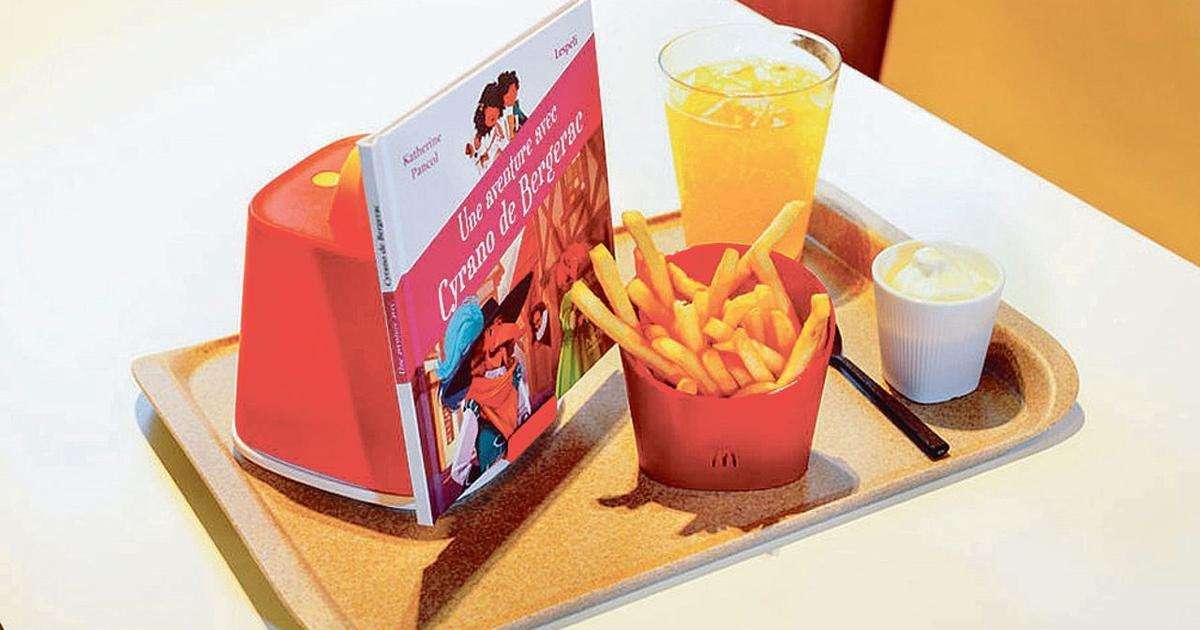From next January 1, the Agec law will ban single-use tableware for on-site catering.
Farewell cones of fries, glasses of Coca, sundae cups and other cardboard burger boxes. In a few months, they will be replaced in all McDonald’s restaurants in France by their reusable equivalents. For fries, the brand had ceramic cones designed, still in its red and yellow colours; drinks and sundaes will be served in glass containers, flanked by the brand’s iconic “M”; for burgers, recyclable paper packaging will replace disposable boxes.
From 1er next January, the Agec law (anti-waste for a circular economy) will prohibit single-use tableware (even if it is cardboard) in fast food establishments with more than 20 covers for meals eaten on site. Less than five months before this crucial deadline, McDonald’s seems to have refined its reusable tableware strategy.
A measure on which the brand is eagerly awaited: with its some 1,500 restaurants in France, it is the undisputed leader in fast food. In 2017, it was singled out by the Zero Waste France association for its waste management: nearly 115 tonnes of disposable packaging used every day in France, or 42,000 tonnes per year. According to Ademe, the fast food sector produces up to 220,000 tonnes per year.
Following the adoption of the Agec law, in 2020, the firm had taken radical measures, for example to respond to the ban on plastic straws: from 2019, it had simply decided to no longer distribute straw at all , modifying the lid of its drinks so that its customers can drink their soda without having to remove it. McDo had continued by removing the plastic lids. She replaced some salad bowls with molded fiber models, disposable plastic cutlery with wooden ones, and even dropped plastic toys from her children’s menu…
There remained the disposable dishes and packaging. A step much more difficult to implement, especially since it breaks with what made McDonald’s success at its origins: simple and recognizable packaging, disposable once used. For this small revolution, and despite more than discreet communication, the brand has sought to innovate.
The new methods have been tested for several months in more than twenty restaurants throughout France, such as at Châtelet-en-Brie (Seine-et-Marne), where the restaurant presented its new crockery in June, with the installation of a dive. According to its manager, the transformation would represent 40% less waste. “We experimented with several solutions, and we think we have found the one that works best with reusable tableware, says a spokesperson for the brand. But it remains to organize the deployment everywhere in France. We prefer to communicate nationally once it is operational.”
We have experimented with several solutions, and we think we have found the one that works best with reusable tableware A spokesperson, McDonald’s
Ultimately, these packaging savings could prevent 8,000 tonnes of waste per year. As part of the “zero plastic” strategy championed by the brand, this could bring reductions to 10,000 tonnes less plastic.
Much remains to be done to equip the 1500 McDonalds in France. In most Parisian restaurants, we have not switched to reusable packaging. Probably because it involves making arrangements in the kitchen, which is difficult when space is at a premium. “In town, pushing the walls is likely to be complicated or even sometimes impossible, not to mention the problems sometimes linked to architectural constraints, explains Steeve Broutin, specialist in these questions, at the specialized site Snacking.fr. The cost may seem as important: the acquisition of a sink, the hiring of additional staff…” To date, most restaurants switching to reusable packaging are located on the outskirts of major cities or in lower density areas.
Restaurants may find it difficult to make a return on their investment. Customers are used to throwing away packaging. They might do the same with glass containers or might also be tempted to steal them. What to fear up to 25% loss. A problem that a deposit system could solve, according to some specialists. It will still be necessary to convince customers to put down a few tens of cents before drinking their Coke and enjoying their sundae…

Emu1981 on November 20th, 2022 at 05:15 UTC »
I was a kid when McDonalds moved away from styrofoam containers. I used to walk by a McDonalds location on my way to and from school and even at 8 years old I noticed a huge change between the amount of garbage floating around the area with the change.
Hopefully this change brings about a similar reduction in the amount of litter that the average McDonald's restaurant generates...
Combatpigeon96 on November 20th, 2022 at 00:42 UTC »
It’s made for dining in the restaurant, not taking it home. The reusable cups are a big improvement.
ph30nix01 on November 19th, 2022 at 22:26 UTC »
Why not jist go back to paper sources from tree farms?